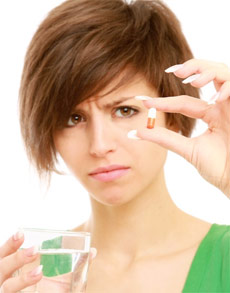fitness news
![]() ,
,![]()
Font size Women’s Health
High prevalence of vitamin D deficiency in UAE women and girls
– Reported, May 24, 2013

The widespread vitamin D deficiency among women as well as adolescent girls in the UAE is a major concern.
Vitamin D, a fat-soluble vitamin that helps the body absorb calcium, prevents bone diseases such as osteoporosis and can reduce the risk of various cancers, diabetes and heart disease.
Available statistics by the Dubai Health Authority (DHA) peg the prevalence percentage at 81 per cent – or two out of three women, estimating that the deficiency level could reach 100 per cent in the Middle East.
A study published in early 2013 from the United Arab Emirates University (UAEU) posits that the prevalence of vitamin D deficiency is higher in adolescent girls than boys.
According to the Centres of Disease Control and Prevention (CDC), low levels of vitamin D leads to osteomalacia (soft bones), causing bone pain and muscle weakness and possible fractures, especially in the elderly population. In children low levels are associated with a high risk for rickets (softening and weakening of the bone).
The body also states that low vitamin D levels are associated with an increased risk of various cancers, cardiovascular disease, dementia, diabetes, glucose intolerance, and autoimmune diseases like multiple sclerosis, among others.
The main sources of vitamin D are sun exposure, food (including fortified foods) and supplements.
The limited or complete lack of exposure to sunlight due to traditional dressing and/or religious considerations could partly explain the low levels of vitamin D among women.
In addition, increased awareness about skin cancer, which is linked to sun exposure, deters women from exposing themselves to sunlight. The low levels can also be due to increasing rate of obesity, which causes low levels of Vitamin D in the blood. The synthesis of Vitamin D can be affected by pollution, which impairs filtering of UV rays, decreasing the effectiveness of sunlight in producing Vitamin D in the skin.
Vitamin D also helps neuromuscular and immune functions and reduces inflammation. It can help prevent a number of different conditions hence the low level of vitamin D deficiency among women as well as adolescent girls in the UAE is a matter of concern. Newer studies are pointing out to the link between vitamin D and health of skin, nails and hair. Some studies suggest correlation between the deficiency and psoriasis and vitiligo [depigmentation of sections of skin].
Brief sun exposure without sunscreen for 15-30 minutes every day early in the morning (avoiding peak), increasing foods including milk, soy milk, cheese, orange juice, tuna, salmon, sardines, liver and egg yolk.
By way of advice, for those diagnosed with the deficiency, the risk of sun exposure should be accessed. Very fair skin tones are at a higher risk of skin cancer whereas dark or black skin doesnt absorb vitamin D from the sun effectively due to the presence of melanin. In such cases fortified foods or injections can be considered.
Until now there has been limited data on the prevalence of vitamin deficiency among healthy adolescents. The study concluded that overall 65.1 per cent of adolescents surveyed were either vitamin D deficient or insufficient with girls reporting a higher level of deficiency by 28 per cent.
CREDITS.
For more United Arab Emirates News Click Here